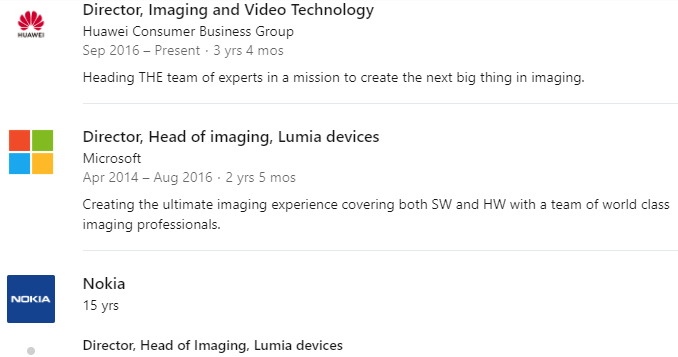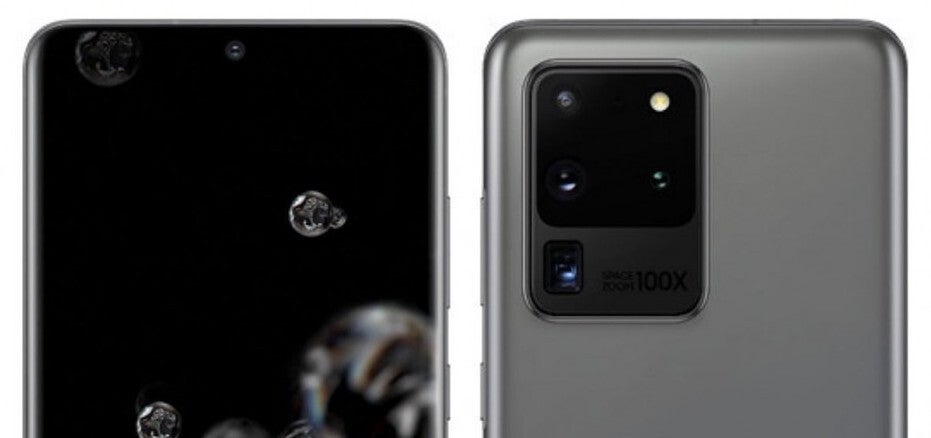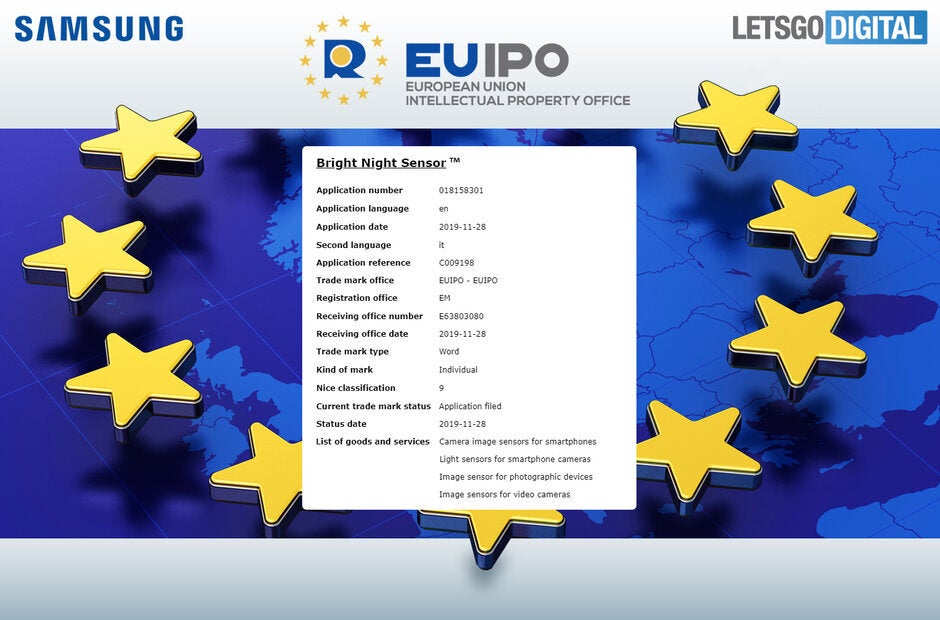Galaxy S20 Ultra camera preview, from 108MP 'Bright Night' to 100x 'Space Zoom'

TL;DR
- First-in-class 108MP sensor with record 2.4 micron Bright Night virtual pixels
- 5x periscope zoom, 10x hybrid, 100x digital Space Zoom
- 8K 30fps or 4K HDR 120fps video recording
- Director's Cut and Single Take features for simultaneous 'best' photo and video recording
In the past few years, phone makers were content to boost their computational photography prowess and software trickery rather than push the envelope in the hardware department like sensors and lens.
With the exception of Huawei, that is, as the company poached Nokia's excellent mobile photography team after the fallout with Microsoft, and the results are very visible since the P20 Pro. Huawei even opened R&D labs in Finland where Nokia used to work, and the chief of its camera software department is Mikko Terho who used to be a Nokia Fellow.
The co-inventor of the PureView camera technology heads Huawei’s own Imaging and Video technology department now, and the rest is history, culminating with the 5x optical zoom of the P30 Pro, and its unique RYYB sensors that can turn night into day.

The Nokia PureView tech creator is now head of Huawei's Imaging and Video dept.
No matter what the top phone makers say, they are looking around and registering what the competition does, so, once Huawei started pulling significantly ahead in the camera hardware department, the folks over at Samsung must have sat in at least one executive meeting and decided to move on from the 12MP sensors Samsung has been using since the Galaxy S7.
The result, at least according to the rumor mill? Potentially one giant leap for the Galaxy S20 series in the camera department. The sheer fact that Qualcomm came out with an 8-series mobile chipset that supports a record for a mobile 200MP camera resolution, speaks volumes about Samsung's plans, as even the Korean version of the S20 is said to arrive with Snapdragon 865 on board.
So, what can we expect from the Galaxy S20 series when it comes to that unique rectangular island on the back that may house at least three main and a few satellite sensor and lens combos? Here's a primer:

Galaxy S20 Ultra main camera sensor
We know, we know, by now everyone and their dog have heard that Samsung may increase the pixel count of its main Galaxy S20 camera sensor 9x compared to what we have on the S10. More pixels don't equate a better picture per se, as they are usually made tinier to fit the count, and collect less light, all other things being equal.
With the magic of pixel-binning, or combining information from several pixels into one, however, not only is the resulting photo file smaller in size, but also the snap itself is usually able to overcome the smallish pixel size with some algorithmic trickery.
It won't even come as a giant surprise, as there is already a phone on the market that utilizes an 108MP sensor that has been co-developed in partnership with Samsung, Xiaomi's Mi Note 10. We took it for a spin, and came away impressed by the level of detail it captures, and unimpressed by the edge softness.
The one that Samsung uses, however, will be exclusively made for the S20 series, and will up the ante in the pixel-binning aspect, from a 2x2, to a 3x3 grid. Thus, while phone makers that use Sony's ubiquitous 48MP sensor in binning mode for 12MP photos, and those who take Samsung's 64MP one down to 16MP by virtually merging four adjacent pixels, use 4x binning, Samsung will reportedly go for 9x.

This will allow it to again churn out 12MP photos from the giant 108MP sensor, but with way more detail, and richer color and dynamic range information, as the virtual pixel size will be the record 2.4 micron. Compare that to the 1.4 micron physical pixel size in the S10 series, or 1.6 micron from pixel-binned 48MP phone cameras, and we are certainly expecting photography improvements all around.
Will the Galaxy S20 Ultra produce the same softish photos that the Mi Note 10's 108MP sensor makes?
On the Mi Note 10, the combination of a huge sensor with smallish 0.8 micron pixels, fixed wide aperture and optics of midrange quality results in a very shallow focus depth from up close, and soft, comparatively blurry images from a regular distance in most cases.
The Galaxy S20 Ultra, however, will reportedly use a different 108MP sensor, and Samsung already equips the S-line and Note series with variable aperture lens. Moreover, the combination of the image-centric Snapdragon 865 chipset plus Samsung's imaging software that it saved for itself instead of giving to Xiaomi, should produce much better results in that respect.
Add to these the rumored record virtual pixel size of 3 x 0.8 = 2.4 microns, and the 12MP pictures from the eventual 108MP main camera on the Galaxy S20 Ultra should be sharper and clearer than from the first iteration of this huge sensor. Not only will the resulting photo file be smaller in size, but also the snap itself should be able to overcome the smallish pixel size with some algorithmic trickery.
Unfortunately, no sensor can output better information than the lens gives it, so we sincerely hope that the huge camera island on the back of the Galaxy S20 Ultra means that Samsung has paid great attention to the optics it couples with the 108MP monster.
Galaxy S20 Ultra telephoto and periscope "Space Zoom"
Galaxy S20 Ultra won't have the 10x pure optical zoom level bandied about, because:
- Samsung's periscope zoom module suppliers Optrontec and Actro are shipping prisms for a 5x optical zoom kit;
- Samsung has only announced a 5x optical zoom periscope module so far;
- Ming-Chi Kuo has stated that the first phone with 10x periscope zoom won't be in the S20 series but rather the Huawei P40 Pro.
No matter what the current multi-lens and ultra-zoom camera kit trend implies about the R&D departments of Samsung, Huawei, Apple, and the like, the efforts started not in Seoul or Cupertino, but rather in Israel's pretty amazing startup culture.
With thousands of young firms working on anything from biosimilars to groundbreaking camera technologies, Israel has been a hub of entrepreneurship and creativity for a good while now, and the Israeli startup Corephotonics has been working on "multi-aperture imaging technologies" for years, with the first patent filed way back in 2013.
We even probed Corephotonics about their zoom tech for phones achieved with two lenses, one wide, one narrow, set at different levels, and came away impressed, as you can see in the video below. This was back in 2014.

Apple, however, was the company that first introduced such a zooming phone, the iPhone 7 Plus, and at the time we thought that it has worked with Corephotonics on its development. The Israelis, however, sued Apple for infringing on their dual camera and zoom patents with the iPhone 7 Plus, saying that Apple's honchos even mocked the viability of their patents during their potential partnership talks.
"Apple’s lead negotiator expressed contempt for Corephotonics’ patents, telling Dr. Mendlovic and others that even if Apple infringed, it would take years and millions of dollars in litigation before Apple might have to pay something," says the filing.
While we are talking about the telephoto type of "optical" zoom here, which has so far produced phones with 2-3x magnification, like recent iPhones, Galaxies, or Mates, what Samsung will reportedly use is the periscope zoom type, as seen on the P30 Pro for the first time.

Samsung acquired a commanding stake in Corephotonics back in the spring, and is even using part of its "folded optics" video for its own periscope zoom lens promo footage from September that tips what will be in the Galaxy S20 Ultra.

Purported Galaxy S11 series periscope zoom module
Samsung is so certain of the eventual stellar zoom capabilities of the S20 series, in fact, that the rumors are pointing towards an internal "Hubble" codename for one of the cameras in the kit. As if to add more water in that particular rumor mill, Samsung trademarked the phrase "Space Zoom" back at the EU patent office, and it even appears at the back of the phone. What could that mean?

Well, after Huawei announced the P30 Pro with its 5x optical zoom of the periscope type that houses the sensor perpendicular to the lens, it gave an example of the 50x hybrid magnification it is capable of achieving with... a moonshot. Say what you will about such stunts, but this was the most talked about feature in the otherwise excellent phone, creating the most headlines in non-specialized publications.
Needless to say, it is now a thing to advocate how your phone can zoom far enough to take pictures of celestial objects, and Google employed the tactic with its new Pixel 4 phones, too, dubbing them as good for... astrophotography. Something along that vein may be happening in the Galaxy S20 Ultra marketing materials too, so stay tuned for some celestial body-snatching during the S20 Unpacked presentation.
Galaxy S20 depth ToF camera
Last but not least, a Samsung supplier is reportedly building a dedicated factory for time-of-flight (ToF) sensors, like the one on the Note 10+, and analysts forecast a surge in demand for those. These will be used for better spatial perception, superior face recognition, and improved portrait-style shots. Samsung's ToF onslaught is expected to invade even its midrangers, so the rising time-of-flight tide is likely to lift the Galaxy S20 boat as well.
The TrueDepth camera setup on the iPhones uses 30,000 points to develop your 3D face matrix from a foot distance, while phones equipped with ToF cameras use a sensor and auxiliary light kit that can detect and map up to 10x that at a distance of about ten feet, bringing about more opportunities in 3D space sensing.
New Galaxy S20 camera features
Just by browsing through the Snapdragon 865 chipset specs, and previewing Samsung's recent mobile imaging trademarks, we can build a fairly good overview of the new features that the Galaxy S20 Ultra camera will bring.
Yes, Snapdragon 865 now supports main phone camera sensors of up to 200MP in resolution, paving the way for the S20 Ultra's 108MP shooter. Yes, its image processing prowess allows for faster and richer triple-frame real-time HDR processing, as well as 8K video capture at 30fps, in case you need them. These will certainly look good on paper, as will 4K HDR video capture at 120fps.
The ones we are most interested in, however, are the features that Samsung keeps trademarking and will most likely add to the camera app of the S20 series. Usually, this many pixels mean a lot of noise and cross-talk, all "features" that are detrimental to clean and sharp photos in the dusk.
Samsung, however, is so certain that it may have overcome the downsides of ultrahigh resolution sensors, that it trademarked the "Bright Night Sensor" phrase in Europe. The way it works? Remains to be seen, but Samsung may apply a mode similar to Google's Night Sight automagically.

Buried in Samsung's camera software code, the folks over at XDA-Devs discovered a few new and potentially exciting features that the company will introduce along with the stellar hardware.
Director’s View
This one will let you record footage with more than one camera at once, like what Huawei does with Dual View on its flagships. Samsung says it will allow you to "tap the thumbnails on the left to switch between camera lenses. Tap the ones on the right to jump to a close-up on a subject," so Director's View is exactly what it says on the tin.

Single Take Photo
Here, you will be asked to pan around the S20 for 15 seconds or so, all the while the phone snaps pictures and records video, throwing various encouraging phrases at you in pop-up form, such as "Oh, you’re doing great!" or "Artist at work…"

Night Hyperlapse, Vertical Panoramas, Custom Filters
These are pretty self-explanatory, with the exception of the Custom Filters option. That one will most likely be letting you create an artsy Instagram-like filter by toying around and with photos in your own camera roll. So, let's recap what can we expect from the Galaxy S20 Ultra camera, as the most decked out in the upcoming high-end series from Samsung:
| Camera hardware and features | Galaxy S20 Ultra (expected) |
|---|---|
| Main sensor | Resolution: 108MP Sensor size: 1/1.3" Pixel size: 0.8 μm, up to 2.4 μm virtual with 3x3 pixel-binning |
| Zoom camera | 48MP tele 5x periscope zoom, 10x hybrid "optical" zoom up to 100x digital 'Space Zoom' |
| Ultrawide lens and 3D space-sensing cameras | Yes |
| Photography features | Bright Night mode Single Take - automatic 15s take for best photo Night Hyperlapse Vertical Panoramas Custom Filters - Instagram style filters from the camera roll |
| Video features | 8K at 30fps 4K HDR at 120fps Director's Cut - simultaneous multilens recording |
Long story short, after a few years of stagnation in terms of snapping hardware, Samsung will be jumping headfirst in the crazy camera trend by outing flagship phones with record sensor resolution, and doubling down on the insane zoom marketing by introducing a Space Zoom mode or feature for the Galaxy S20 "Hubble" series.
It will have all other bases of a top-shelf 2020 phone camera covered as well - 8K video, ultrasensitive night mode, simultaneous video recording, the works - so we can't wait to take the S20 series to the pit with the other mobile camera juggernauts out there.













Things that are NOT allowed: